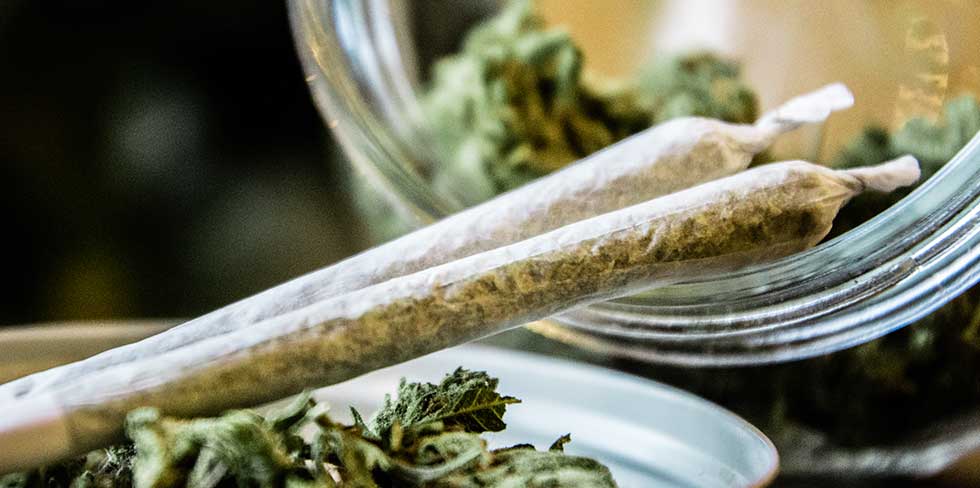Possibility of cost reimbursement through health insurance
Although many people consider marijuana a milder drug, it’s important to remember that there are no “soft” or “hard” drugs— all drugs can be dangerous and addictive. This psychoactive substance can have numerous harmful effects on a person’s physical, mental, and social health. The most serious consequence of marijuana use is dependence, which is why treating marijuana addiction is essential.
Everything starts with marijuana. Many people who use other psychoactive substances, such as heroin or cocaine, first began with marijuana. Unfortunately, young people start using it at a very early age, often while they are still teenagers. It is estimated that more than 50% of all adults started using marijuana before the age of 18.
The biggest challenge in treating marijuana dependence early on is that the person believes this isn’t a problem. However, the reality is quite different, as weed addiction is a sneaky condition.
Marijuana is a term for Indian hemp (Cannabis) and belongs to the group of cannabinoids. Many people wonder what marijuana actually looks like. Also known as cannabis, it comes from a plant that thrives in warm, tropical regions. The plant has distinctive green leaves with serrated edges, making it easily recognisable. The dried leaves and flowers of the female plant are most commonly used, either smoked or brewed into tea. Additionally, the plant produces a resin, known as hashish, which is much more potent.
Tetrahydrocannabinol, better known as THC, is the psychoactive compound found in Indian hemp, commonly known as marijuana. It is THC that makes marijuana addictive.
When marijuana is smoked as a cigarette, THC travels through the lungs into the bloodstream, which then carries it to the brain and other organs. Once in the brain, it binds to receptors on nerve cells in areas responsible for concentration, coordination, memory, thinking, pleasure, and emotions. This interaction is what causes the ‘high’.

Marijuana can lead to a wide range of psychological, physical, and social consequences, particularly when used heavily, frequently, and over a long period of time. Despite its increasing use, it’s important to note that, like other psychoactive substances, marijuana carries significant risks.
Research shows that several factors influence the likelihood of developing a marijuana addiction. These include genetic predisposition, exposure to stressful or traumatic experiences, peer pressure, poor family circumstances, childhood abuse or neglect, and a social circle that encourages marijuana use.
Marijuana use can lead to short-term effects that impact the psyche, emotions, and cognitive functions. These may include hallucinations, delusions, and difficulties with memory and concentration, as well as altered perceptions of time and the senses. In some cases, it can also trigger psychosis, panic attacks, anxiety, and tension. It is common for users to experience excessive laughter or, conversely, an inexplicable sense of fear.
Some may notice their thoughts becoming fragmented, with a rush of ideas and impaired speech, while others might experience feelings of derealisation or depersonalisation. Short-term physical symptoms can include a rapid heartbeat, increased pulse, dizziness, nausea, red eyes, dry throat and lips, disorientation, and slow reflexes.
Chronic and long-term marijuana use can lead to changes in brain structures and mechanisms that regulate stress, motivation, and the reward system. These alterations can significantly affect both mental and physical health. Prolonged use often results in impaired abstract thinking, memory issues, depression, anxiety, emotional instability, and even chronic psychosis, schizophrenia, and suicidal thoughts or behaviours. There may also be a decline in IQ, difficulty concentrating on work or school tasks, and a loss of motivation and ambition.
On a physical level, frequent marijuana use is linked to respiratory issues such as chronic cough, pharyngitis, bronchitis, respiratory infections, and an increased risk of lung cancer. It can also affect the reproductive system, leading to reduced fertility, menstrual cycle irregularities, and issues with potency, as well as a decreased libido. Long-term use may also result in high blood pressure, dizziness, and emotional numbness.
Marijuana addiction often leads to the neglect of daily responsibilities, social activities, and personal hobbies. As a result, regular users may become isolated from friends and family, lose interest in activities they once enjoyed, and associate with negative influences. Long-term marijuana use can also cause a decline in work and school productivity, a loss of ambition and future plans, and an overall reduction in quality of life.
Treating marijuana addiction requires a comprehensive, multidisciplinary approach that combines both medical and psychotherapeutic interventions. While many individuals may eventually recognise that their cannabis use has negatively impacted their lives and make the decision to stop, the process is not always straightforward. However, with the right support, recovery is entirely possible and can be effectively managed in specialised addiction treatment centres.
The primary objectives of therapy focus on addressing the psychological consequences of long-term marijuana use, such as paranoia, delusional thinking, amotivational syndrome, depression, and cognitive issues like memory and attention disorders. Special emphasis is placed on managing cravings for marijuana and fostering a healthier lifestyle. This involves changing life habits, controlling social circles, avoiding other psychoactive substances and alcohol, engaging in regular physical activity, seeking employment, and maintaining a balanced biorhythm.
Marijuana addiction treatment typically occurs in several interconnected stages, each with a specific goal and employing various methods to achieve the best outcomes. These stages can be tailored to suit individual needs, the severity of addiction, any coexisting disorders, and the person’s social environment. The collaboration of the entire professional team—doctors, psychologists, psychiatrists, psychotherapists, and physiotherapists—along with the active involvement of family members, friends, and the patient themselves is crucial to the process .
After completing intensive inpatient treatment, the patient continues with outpatient follow-up. Regular monthly check-ups, which include consultations with a psychiatrist, adjustments to the prescribed therapy, and renewal of medication blockers, are essential. Additionally, telephone support from a psychologist in case of changes in condition or mood, along with ongoing support from family and close friends, significantly increases the chances of long-term sobriety and successful maintenance of progress.
By integrating these various stages and approaches into a personalised treatment plan, experts support the patient in not only stopping marijuana use but also in gradually improving their quality of life. This includes developing healthy habits, building stable social relationships, and regaining control over their mental, physical, and emotional well-being.

The duration of treatment for marijuana addiction varies based on the individual’s needs and health condition. Detoxification and stabilization typically take around 14 days. During this period, our expert team provides comprehensive support, a personalised approach, and the necessary therapeutic methods to ensure a smooth alleviation of withdrawal symptoms. This phase also focuses on gradually restoring both mental and physical health, laying a strong foundation for lasting recovery and the permanent cessation of addiction.
For any additional information regarding treatment prices and available options, please feel free to call us or contact us via email. Our team is always ready to provide detailed information and answer any questions you may have.
The process of treating marijuana addiction requires an integrated approach that addresses all aspects of recovery. Our facility applies a multi-layered treatment plan, which includes:
This comprehensive approach not only provides expert care and a stable environment but also motivates individuals to adopt positive lifestyle changes. The combination of holistic therapies, modern techniques, and a welcoming atmosphere helps patients regain balance and move forward towards a future free from marijuana addiction.